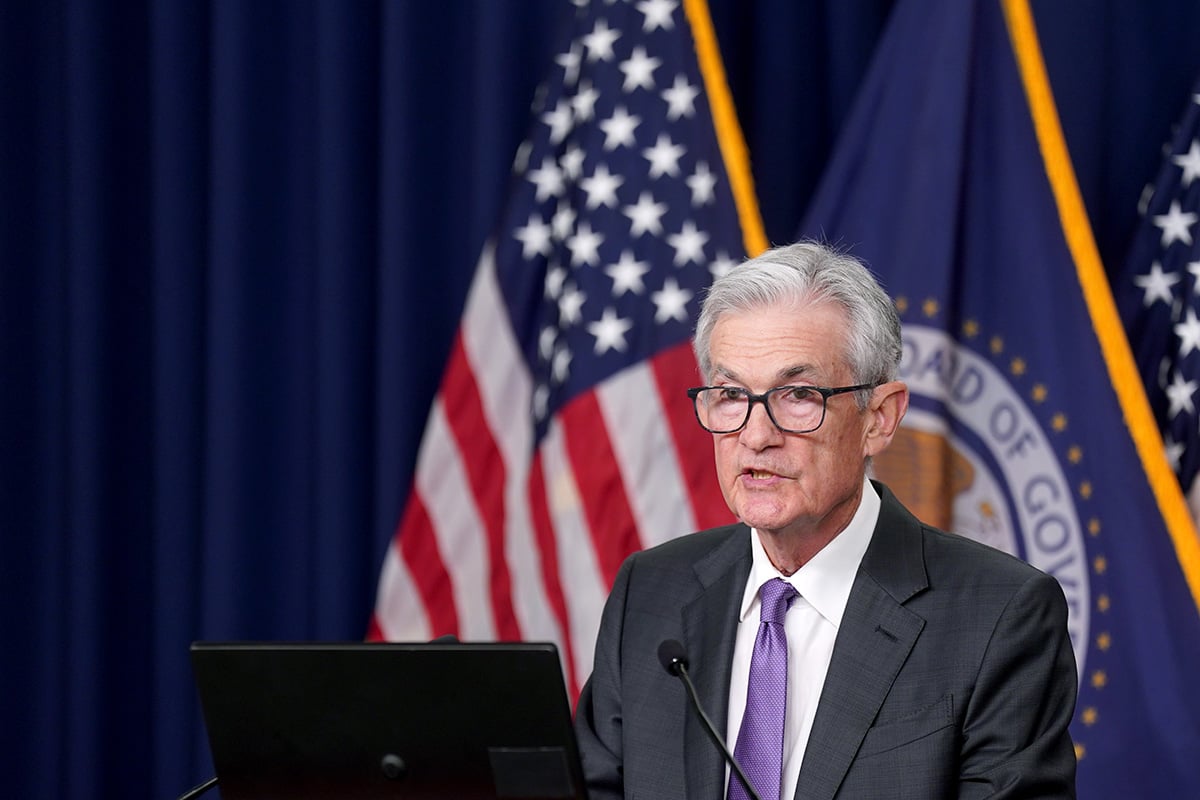Treasuries were the world's worst-performing bonds this year, before the Federal Reserve meets today and tomorrow to decide whether to trim its debt-buying program.
U.S. government securities due in a decade and longer have fallen 11 percent from January 1, 2013, to yesterday, the biggest loss among 144 debt indexes tracked by Bloomberg and the European Federation of Financial Analysts Societies. The Treasury is scheduled to sell $32 billion of two-year debt today, in the first of four note auctions this week.
“I don't think the Fed will start to taper,” said Kei Katayama, who buys non-yen debt in Tokyo for Daiwa SB Investments Ltd., which manages the equivalent of $47.9 billion. “The economic data are mixed. Yields may go slightly lower.” Katayama said the duration of his holdings is “slightly” longer than the benchmark he uses to gauge performance.
Benchmark 10-year yields declined one basis point, or 0.01 percentage point, to 2.87 percent as of 7:57 a.m. in London, according to Bloomberg Bond Trader data. The 2.75 percent security due in November 2023 climbed 3/32, or 94 cents per $1,000 face amount, to 98 31/32 The yield has risen from 1.76 percent at the end of 2012.
The last two-year sale on Nov. 25 drew bids for 3.54 times the amount of debt offered, the highest level since April at the monthly auctions. The notes scheduled for sale today yielded 0.36 percent in pre-auction trading, compared with 0.30 percent at last month's sale.
The Treasury's sales this week will also consist of $35 billion in five-year securities tomorrow and $29 billion of seven-year notes on Dec. 19. It will auction $16 billion in five-year Treasury Inflation Protected Securities Dec. 19.
China's Shanghai Stock Exchange Composite Index fell for a sixth day, maintaining demand for the relative safety of government debt, according to Kazuaki Oh'e, a debt salesman at CIBC World Markets Japan Inc. in Tokyo.
U.S. policy makers will decide whether the economy is strong enough to curb the bond purchases it uses to support the expansion. The Citigroup Economic Surprise Index, which shows whether U.S. data beat or missed expectations, climbed to 35.4 yesterday, a two-month high. The 2013 average is 9.64.
Thirty-four percent of economists contacted by Bloomberg Dec. 6 expected the tapering this week, an increase from 17 percent in a Nov. 8 survey. The Fed buys $85 billion of Treasury and mortgage debt a month to fuel growth by putting downward pressure on borrowing costs.
Odds of Tapering
Drew Matus, deputy U.S. chief economist at UBS Securities LLC in Stamford, Connecticut, said the odds of a taper now are about one in three.
“We're in a holiday week,” Matus said yesterday on Bloomberg Radio. “Volumes are going to be lower. A taper is not fully priced in.” It “could create much more volatility in markets. I'm not sure the Fed wants to do that the week before Christmas.”
Trading volume at ICAP Plc, the largest inter-dealer broker of U.S. government debt, was $194.4 billion yesterday, versus the average of $310.5 billion for the past six months.
A gauge of Treasuries volatility, the Bank of America Merrill Lynch MOVE index, was 69.92 yesterday. The six-month average is 82.06.
A low inflation rate gives the Fed time to wait, said UBS's Matus. His company is one of the 21 primary dealers that trade directly with the Fed.
U.S. consumer prices rose 1.3 percent in November from 12 months earlier, based on a Bloomberg News survey of economists before the Labor Department reports the figure today. The 1 percent increase in October was the least in four years.
Data earlier this month showed the U.S. jobless rate fell to a five-year low of 7 percent, while manufacturing and retail sales expanded.
Yields may rise temporarily, said Hideo Shimomura, who helps oversees the equivalent of $67.9 billion as chief fund investor at Mitsubishi UFJ Asset Management Co. in Tokyo, part of Japan's largest publicly traded bank.
“I think the Fed will suggest that they will be tapering next year,” he said. “A tapering is not 100 percent priced into the market.”
Ten-year yields may climb 10 basis points this week, he said. They will probably fall back soon after as investors realize an interest-rate increase is still far away, he said.
The Fed has kept its benchmark, the target for overnight loans between banks, at almost zero for five years. The odds of an increase by January 2015 are about 16 percent, based on data compiled by Bloomberg from futures contracts.
Copyright 2018 Bloomberg. All rights reserved. This material may not be published, broadcast, rewritten, or redistributed.
Complete your profile to continue reading and get FREE access to Treasury & Risk, part of your ALM digital membership.
Your access to unlimited Treasury & Risk content isn’t changing.
Once you are an ALM digital member, you’ll receive:
- Thought leadership on regulatory changes, economic trends, corporate success stories, and tactical solutions for treasurers, CFOs, risk managers, controllers, and other finance professionals
- Informative weekly newsletter featuring news, analysis, real-world case studies, and other critical content
- Educational webcasts, white papers, and ebooks from industry thought leaders
- Critical coverage of the employee benefits and financial advisory markets on our other ALM sites, PropertyCasualty360 and ThinkAdvisor
Already have an account? Sign In Now
*May exclude premium content© 2024 ALM Global, LLC, All Rights Reserved. Request academic re-use from www.copyright.com. All other uses, submit a request to [email protected]. For more information visit Asset & Logo Licensing.





